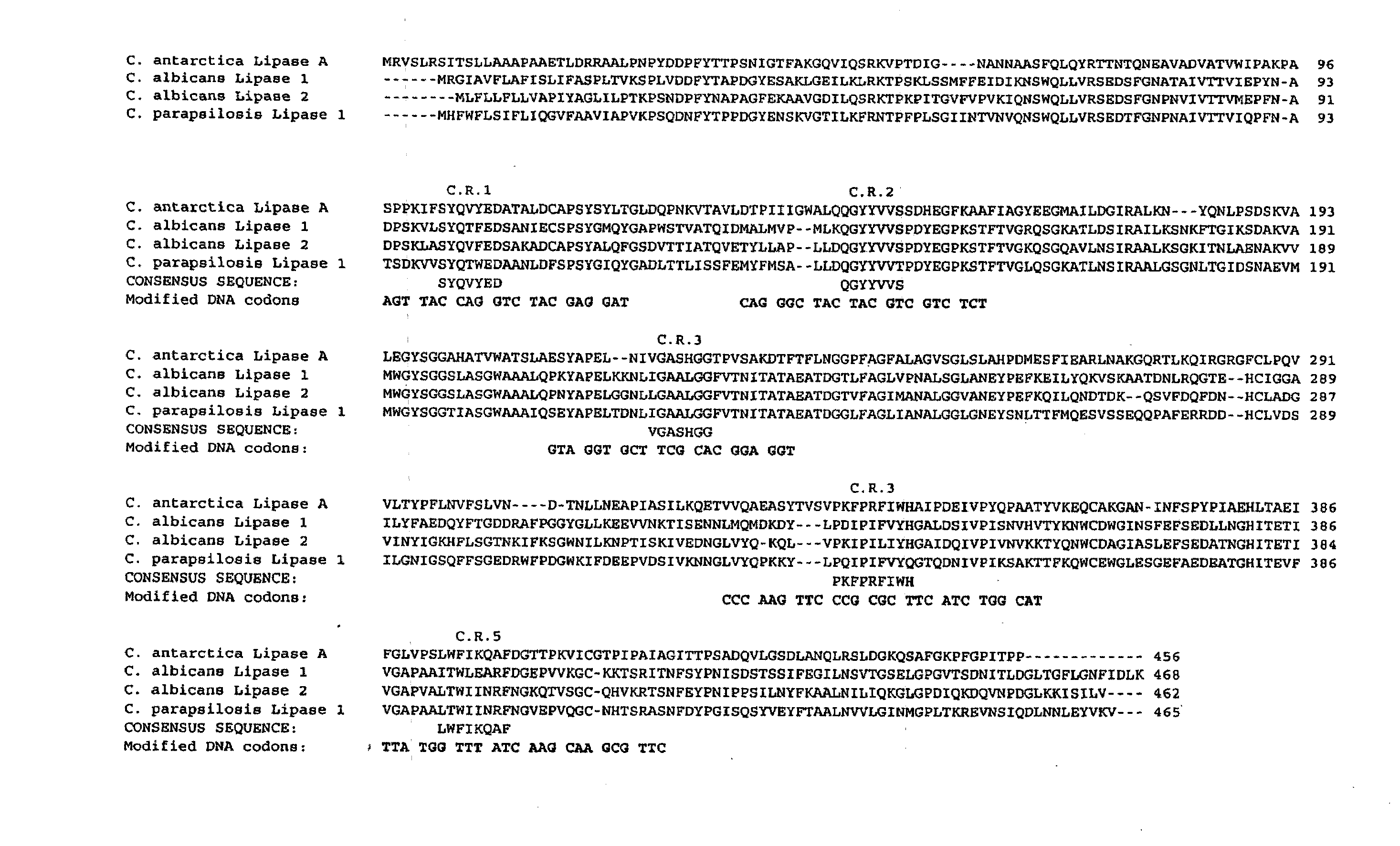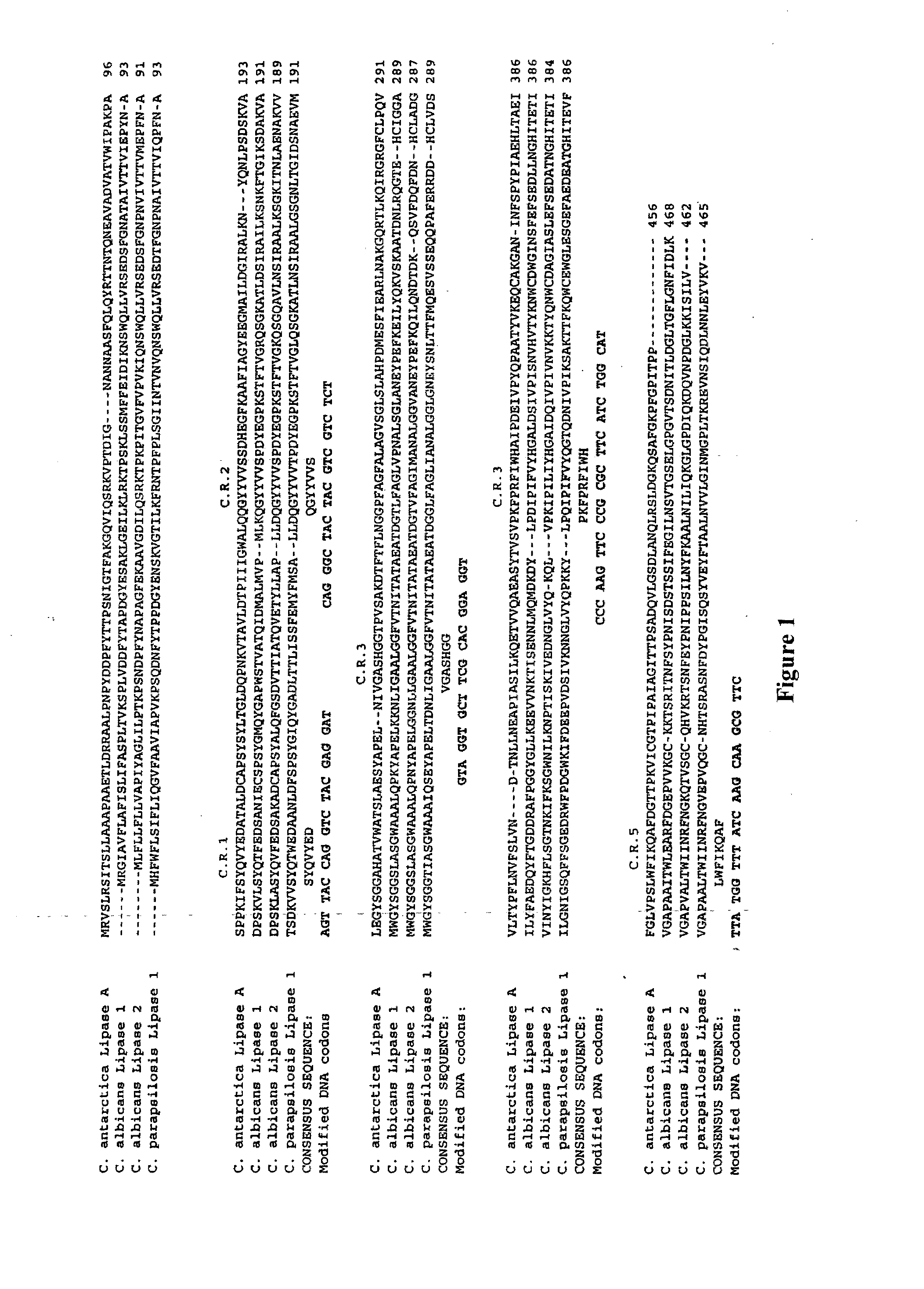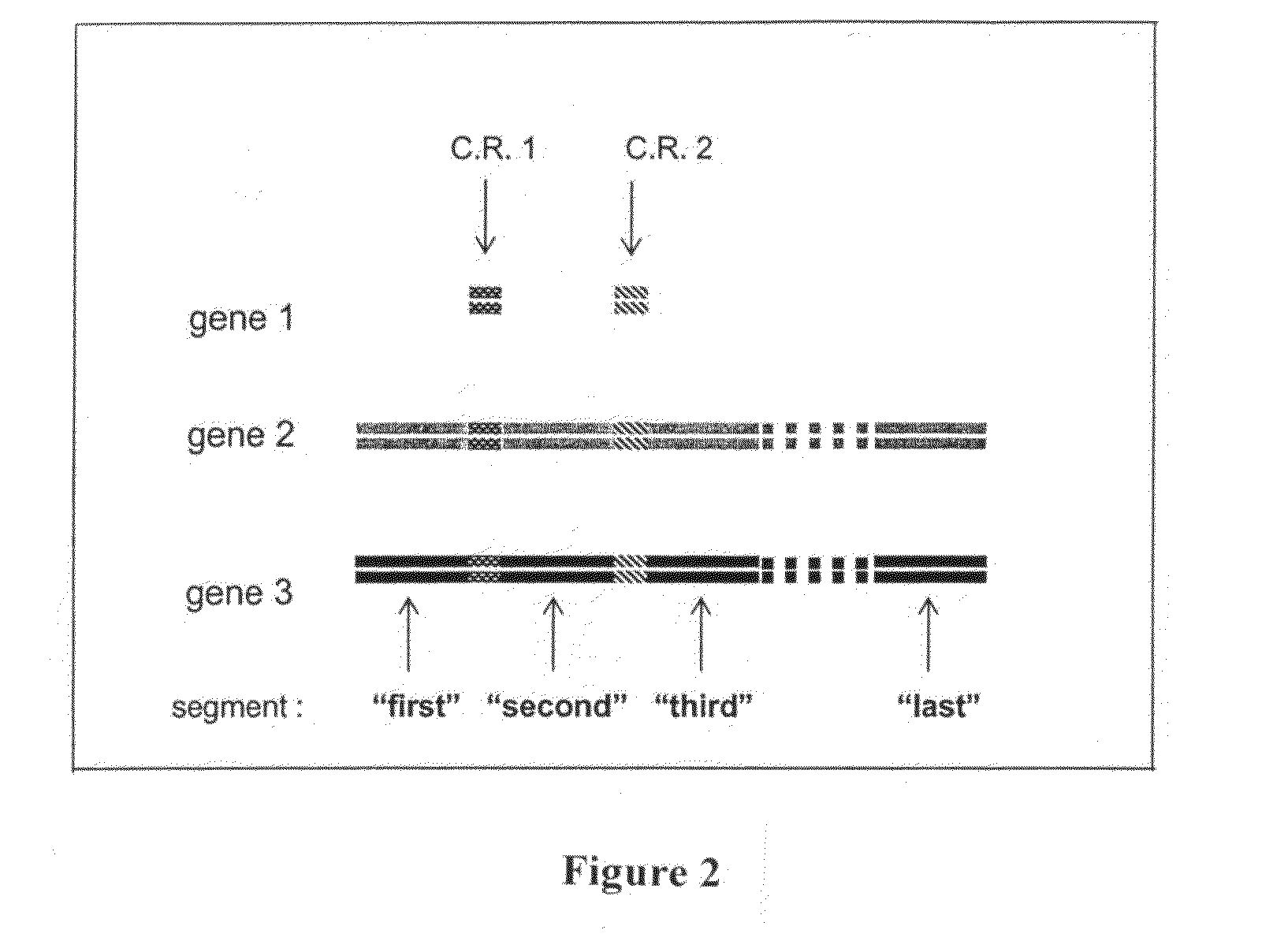Libraries of recombinant chimeric proteins
a technology of chimeric proteins and libraries, applied in chemical libraries, combinational chemistry, dna preparation, etc., can solve the problems of increasing negative mutation rate, accumulating neutral mutations with undesired, and point mutagenesis alone may be too gradual to allow large-scale block changes, etc., to improve the characteristics of native proteins, low improvement potential, and high information density
- Summary
- Abstract
- Description
- Claims
- Application Information
AI Technical Summary
Benefits of technology
Problems solved by technology
Method used
Image
Examples
example 1
[0142]Chemokine (C—C) receptors are G-protein-coupled trans membrane receptors found in vertebrates. Some chemokine receptors are involved in chemotaxis and the immune response. Different types of chemokines trigger specific immune response mechanisms of novel cell types. The present invention is directed to monitoring the trafficking of cells to desired locations in the body, by building a library of chemokine receptors with altered N-termini (and are thus activated by alternative chemokines), trans membrane domains (consequently being able to function in different cell types), as well as altered C-termini (which promote a somewhat different chemotaxis-response).
Methods: a) Identifying Conserved Amino Acids in Proteins of Interest
[0143]Seven “parental” chemokine receptor proteins of interest were identified: 5 of mammalian origin (2-human, 1 of cat origin and 2 coming for horse), 1 from chicken and one of viral origin. The amino acid sequences of these proteins are depicted below, ...
example 2
[0155]Hexose carrier proteins, situated in the chloroplast membrane, are responsible for controlling the flux of carbon, in the form of hexose sugars, across the plant chloroplast's envelop. Hexose carrier proteins may be used to manipulate carbohydrate transport. They may be utilized to alter carbon partitioning in the whole plant or to manipulate carbohydrate distribution between cellular compartments. Such manipulations may have a general impact on the plant or on a specific feature such as the taste of the plant's fruit.
[0156]The present invention provides methods to control the transport of hexose sugars in tomatoes by creating a large variety of chimera-hexose transporters and screening plants for better tasting tomatoes, by building a library of hexose carrier proteins coming from five very different origins.
a. Identifying Conserved Amino Acids in Proteins of Interest
[0157]Five “parental” hexose carrier proteins of interest were selected, including: one from common wheat, one...
example 3
[0174]Elastin is a protein found in the skin and tissue of the body. It helps to keep skin flexible but tight, providing a bounce-back reaction if skin is pulled. Enough elastin in the skin means that the skin will return to its normal shape after a pull. It also helps keep skin smooth as it stretches to accommodate normal activities like flexing a muscle or opening and closing the mouth to talk or eat.
[0175]Elastin tends to deplete as people age, resulting in wrinkled or stretched out skin. One might note the “pregnancy pouch” many women have many years after having a baby. In part, the leftover skin is a result of inadequate elastin, and also overstretching of the skin covering the abdomen during pregnancy.
[0176]Although many cosmetic companies list elastin from cows and birds as an ingredient in “anti-aging” skin care products, this ingredient does not penetrate the skin layer, which is needed in order to make the skin more elastic. In order to produce an effective elastin for th...
PUM
 Login to View More
Login to View More Abstract
Description
Claims
Application Information
 Login to View More
Login to View More - R&D
- Intellectual Property
- Life Sciences
- Materials
- Tech Scout
- Unparalleled Data Quality
- Higher Quality Content
- 60% Fewer Hallucinations
Browse by: Latest US Patents, China's latest patents, Technical Efficacy Thesaurus, Application Domain, Technology Topic, Popular Technical Reports.
© 2025 PatSnap. All rights reserved.Legal|Privacy policy|Modern Slavery Act Transparency Statement|Sitemap|About US| Contact US: help@patsnap.com



